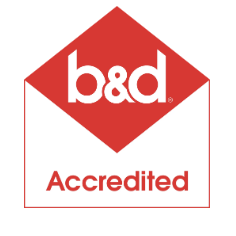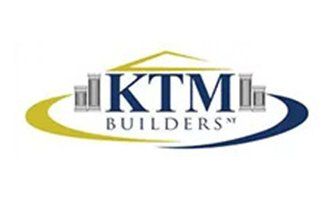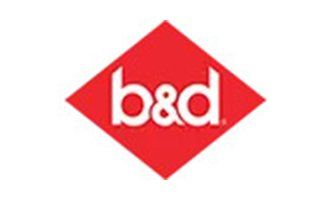Stunning Timber Finishes
Want to achieve the natural style and warmth of timber without the high cost? Looking for a low maintenance alternative to traditional timber? Well, Darwin Roller Door Services should be your first call! We provide residential, commercial and industrial clients with the option to choose from one of our four beautiful timber shades, including:
- Japan Cherry
- Macadamia Nutwood
- Hickory Nutwood
- Golden Oak
We source our roller and garage doors from B&D, which use a unique process where paint— with all the aesthetics of natural wood—is applied to a low-maintenance steel surface. This creates a stunning timber-look finish without the associated maintenance!
Contact Us For A Quote
Delivering Long-Lasting Results
Timber is a fantastic way to incorporate nature into your home; however, it warps and fades over time, requiring ongoing maintenance. Our timber coating is a modern approach to traditional timber materials. It doesn't require any staining or resealing, and it's guaranteed to last! Available in a range of colours and finishes, it's highly affordable and will improve the aesthetics of even the oldest homes.
If you already have timber situated around your property, we can also colour match. Our timber shade range isn’t available on all types of doors, so get in touch with our team on (08) 8932 3999 before deciding on a finish.
Frequently Asked Questions
-
Why should I coat my timber?
Coating your timber is an essential step in preserving its natural beauty, strength, and durability—especially in harsh climates like Darwin’s. Timber is a porous material that can easily absorb moisture, which can lead to warping, rotting, splitting, and fungal growth over time. A high-quality coating acts as a protective barrier against these environmental threats, including UV rays, humidity, and rainfall, which are common in tropical regions. It also helps to retain the wood’s colour and texture, preventing it from fading or turning grey due to sun exposure. Coated timber is generally easier to clean, more resistant to wear and tear, and better equipped to withstand daily use. Whether your timber is part of exterior cladding, timber shades, furniture, or decorative features near roller doors, applying the right coating helps extend the lifespan of your timber and reduces the need for frequent repairs or replacements. In short, coating timber is both a protective measure and a way to enhance its visual appeal and long-term performance.
-
How do I choose the right coating for my timber?
Choosing the right coating for your timber involves considering the type of timber you have, the intended use, exposure to the elements, and the desired finish. There are generally two broad categories of coatings: film-forming (such as varnishes and paints) and penetrating oils or stains. Film-forming coatings create a visible layer over the timber that offers strong protection against UV and moisture, making them a popular choice for high-traffic or high-exposure areas. Penetrating coatings, on the other hand, soak into the wood to enhance its natural appearance and allow the timber to breathe, which can be beneficial in hot and humid climates like Darwin’s. The timber’s location—indoors, outdoors, under cover, or fully exposed—will influence your choice. For instance, timber shades in Darwin exposed to sun and rain may benefit from UV-resistant oil-based coatings. It’s also important to match the coating with the timber species, as some woods react better to specific products. When in doubt, consulting with a professional or referring to manufacturer guidelines can help ensure your selection supports both the aesthetic and protective needs of your project.
-
How many coats of timber coating do I need?
The number of coats needed for timber coating typically depends on the type of product used, the condition and porosity of the timber, and the level of protection you’re aiming for. Most timber coatings recommend applying at least two coats to achieve a consistent and durable finish, while some products—especially those exposed to harsh weather—may benefit from a third coat for added protection. For new or untreated timber, the first coat often acts as a primer and may absorb more into the surface, requiring additional layers to build up a solid barrier. In contrast, previously coated timber may only need a light sanding followed by one or two maintenance coats, depending on wear. It’s important to follow the manufacturer’s instructions regarding drying times and sanding between coats to ensure proper adhesion and a smooth, even finish. In climates like Darwin’s, where timber shades and other outdoor wood features face high UV exposure and humidity, applying extra care during the coating process may help enhance longevity and resistance to weathering. Ultimately, the right number of coats will balance protection, appearance, and the specific environmental demands of your location.
-
How long does timber coating last?
The lifespan of a timber coating can vary widely depending on the type of coating used, the timber’s exposure to sunlight, moisture, and temperature fluctuations, as well as how well it’s maintained over time. Generally, penetrating oils and stains may need reapplication every 12 to 24 months in exposed areas, while film-forming coatings like paints or varnishes can last between 2 to 5 years or more, depending on their formulation and environmental conditions. Signs that it’s time to recoat include fading, loss of sheen, surface cracking, or water no longer beading on the surface. Regularly inspecting your timber and addressing wear early can help extend the life of the coating and prevent damage to the wood underneath. Selecting high-performance coatings specifically designed for external use in tropical climates can also improve durability. Ultimately, how long a timber coating lasts comes down to the balance of quality application, exposure, and ongoing upkeep.
-
How do I maintain coated timber?
Maintaining coated timber involves regular inspection, gentle cleaning, and timely reapplication of coatings to keep the surface looking good and protected. For exterior timber—such as timber shades or cladding near roller doors in Darwin’s intense climate—start by removing dust, salt, and grime with a soft brush or mild detergent and water. Avoid harsh chemicals or high-pressure washing, as these can damage both the coating and the wood beneath. It’s helpful to inspect timber every few months for signs of wear, including colour fading, cracking, or peeling. If these signs appear, a light sanding followed by a fresh coat of the appropriate product can refresh the finish and prevent deeper damage. In humid or tropical areas, keeping timber surfaces free from mould and mildew is also crucial—especially where airflow is limited. For timber that sees regular sun exposure or rain, consider reapplying protective coatings annually or as recommended by the product manufacturer.
-
What’s the difference between oil-based and water-based timber coatings?
Oil-based and water-based coatings both offer protection for timber but differ in their composition, application, and final appearance. Oil-based coatings penetrate deeply into the timber, enriching the wood grain and offering a more natural, matte finish. They are often preferred for exterior features like timber shades in Darwin because of their ability to handle weather extremes and their tendency to wear gradually rather than peel. Water-based coatings, on the other hand, tend to form a surface layer that dries faster, has less odour, and is easier to clean up. These coatings are often clearer and can maintain a lighter appearance of the timber, which may suit certain aesthetic preferences. However, they might require more frequent maintenance in harsh environments. Your choice depends on factors such as climate, wood type, desired appearance, and how often you're prepared to recoat or maintain the surface.
Site Links
Services
Trading Hours
- Monday
- -
- Tuesday
- -
- Wednesday
- -
- Thursday
- -
- Friday
- -
- Saturday
- Appointment Only
- Sunday
- Closed
HIA Member
ABN 17 509 069 592





































